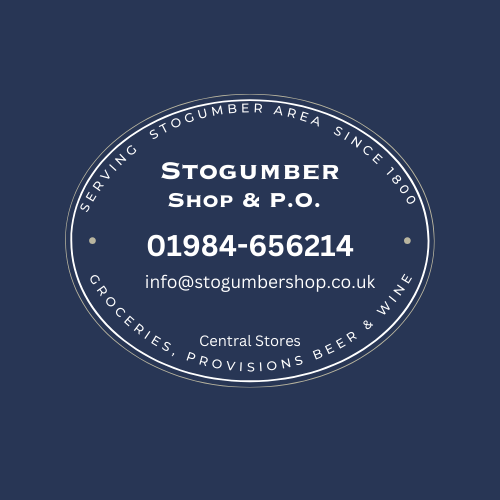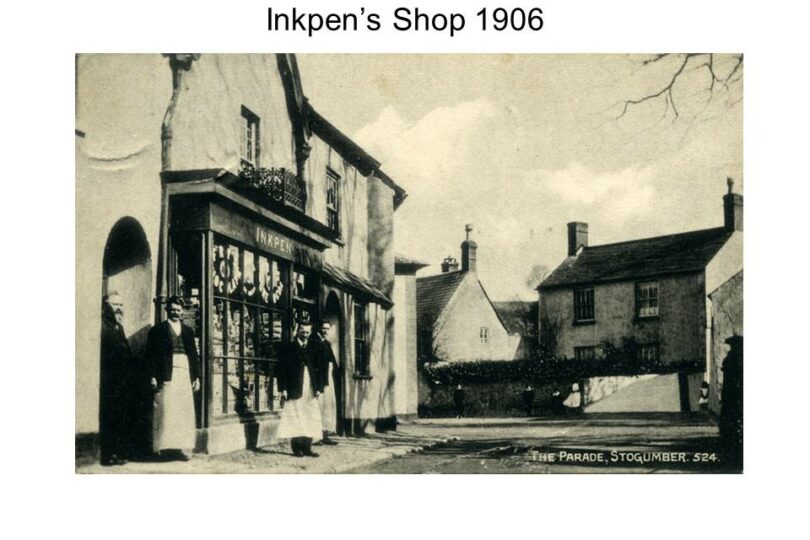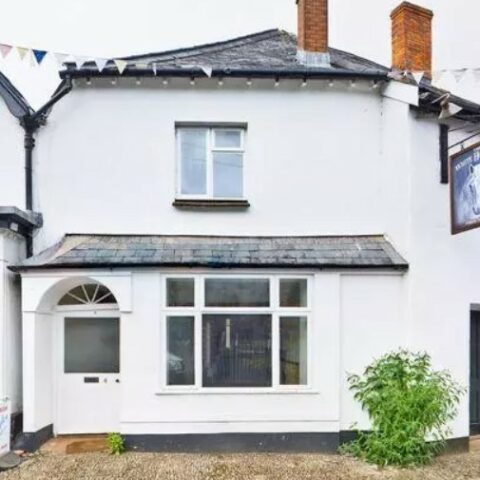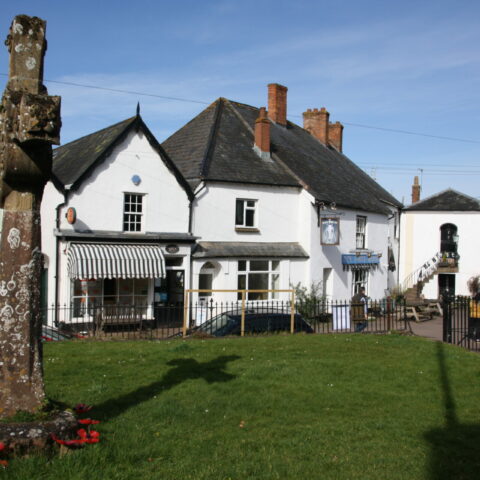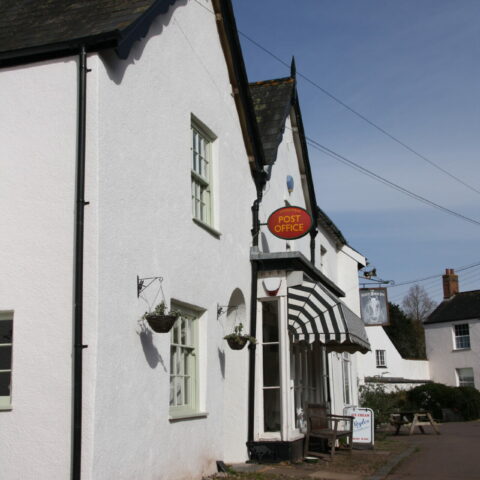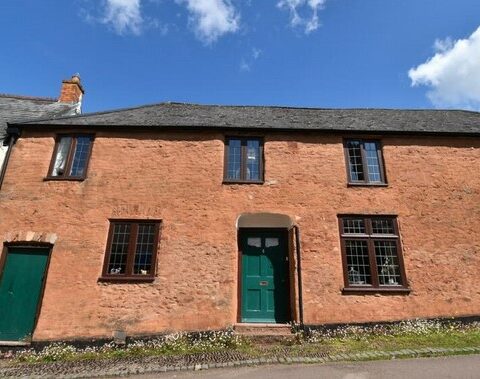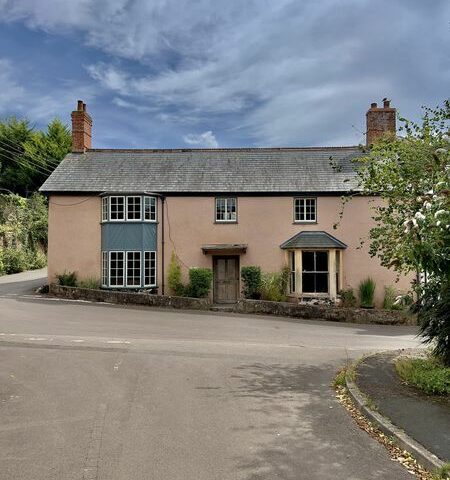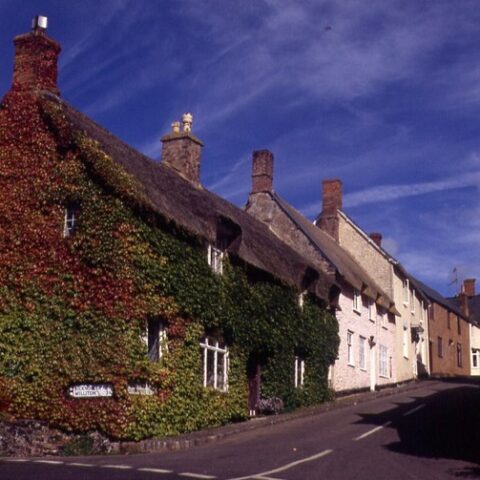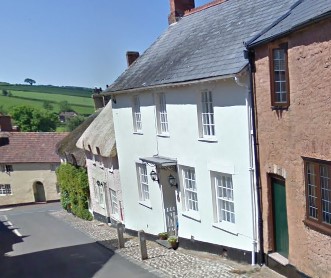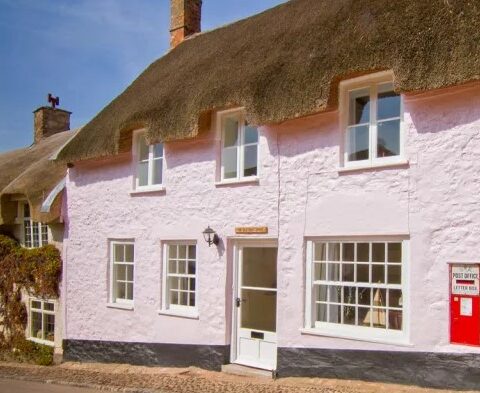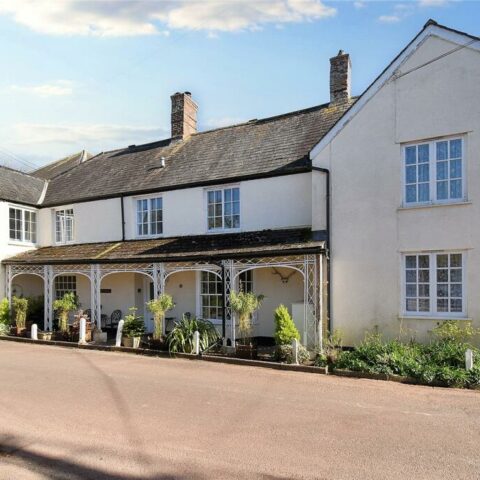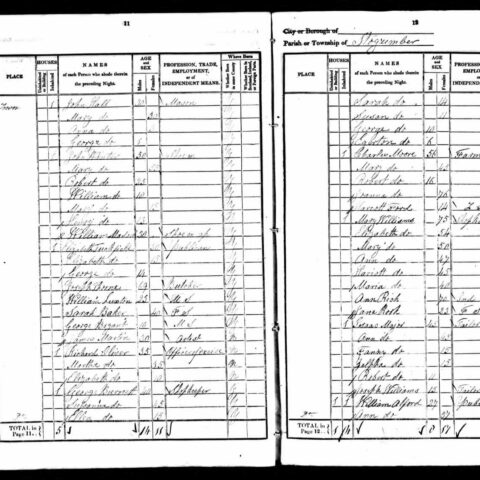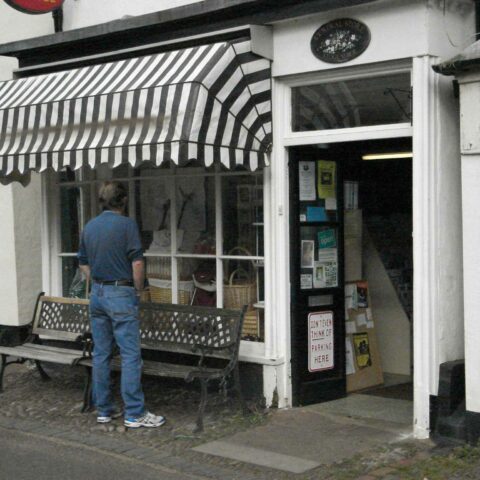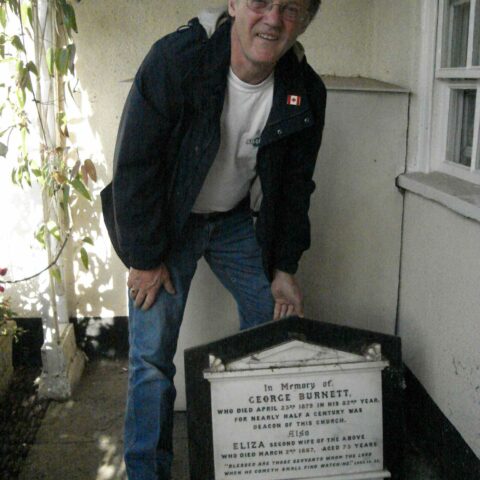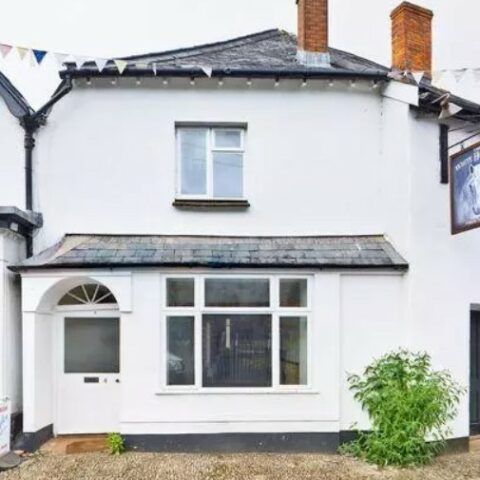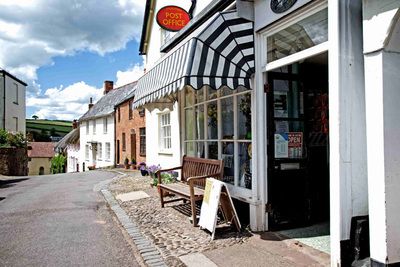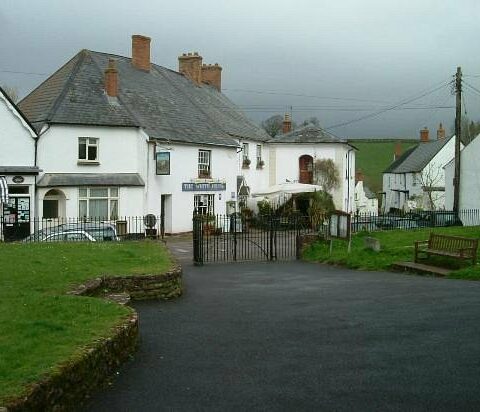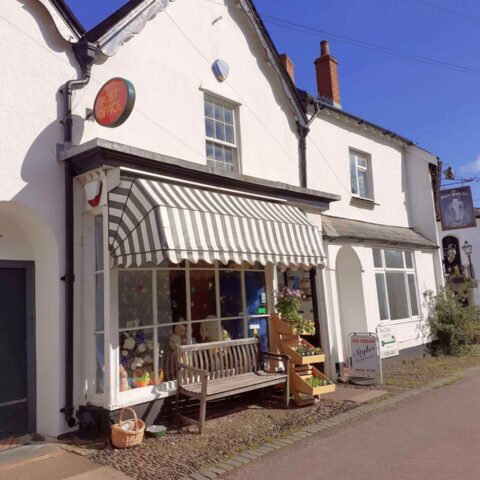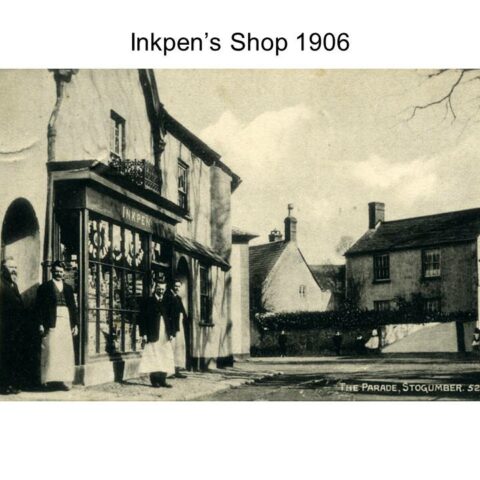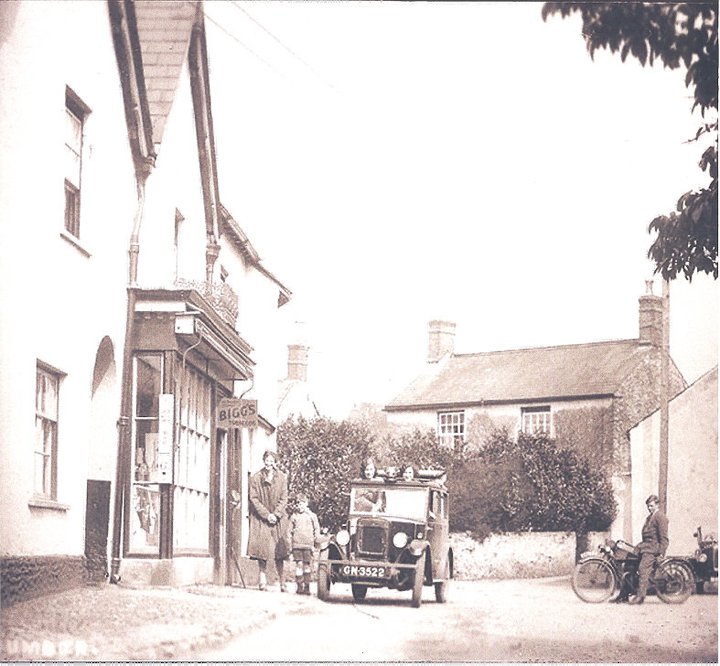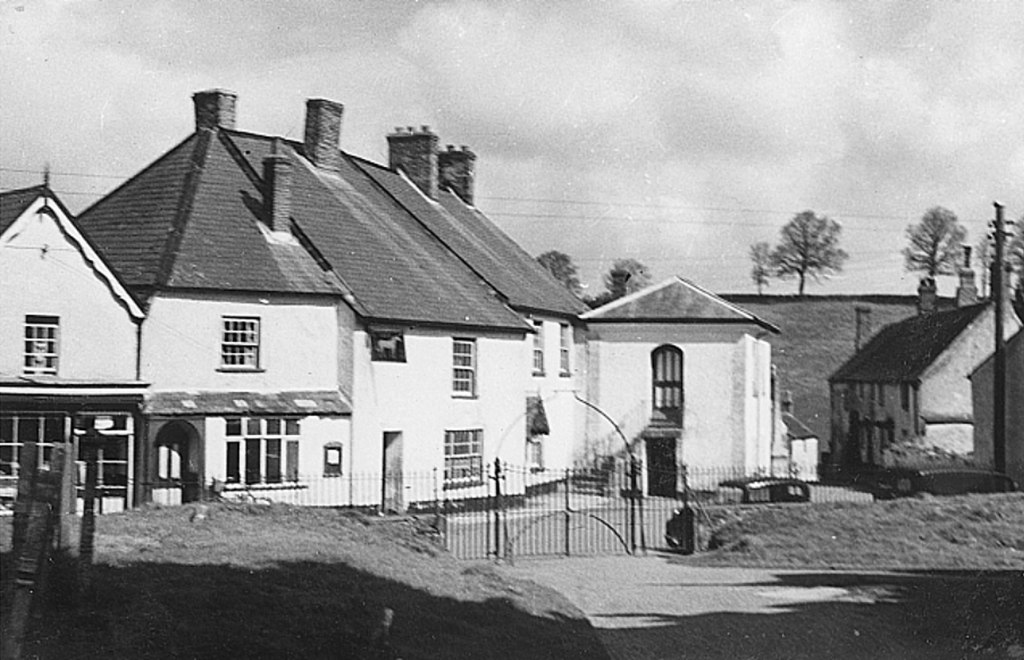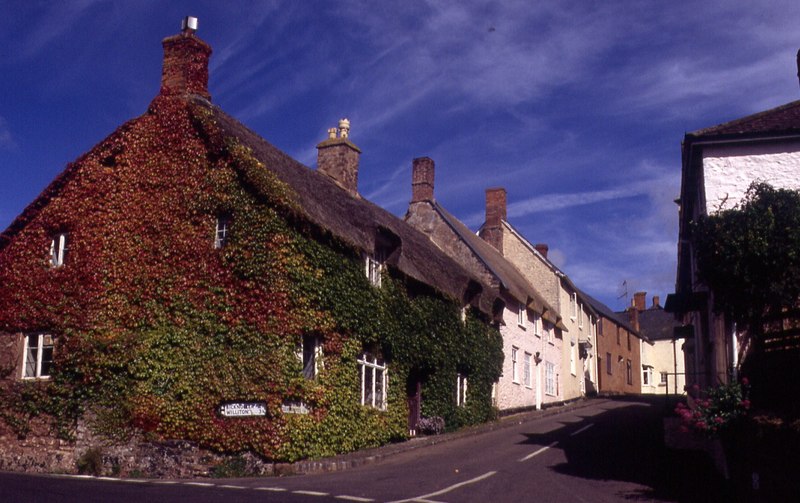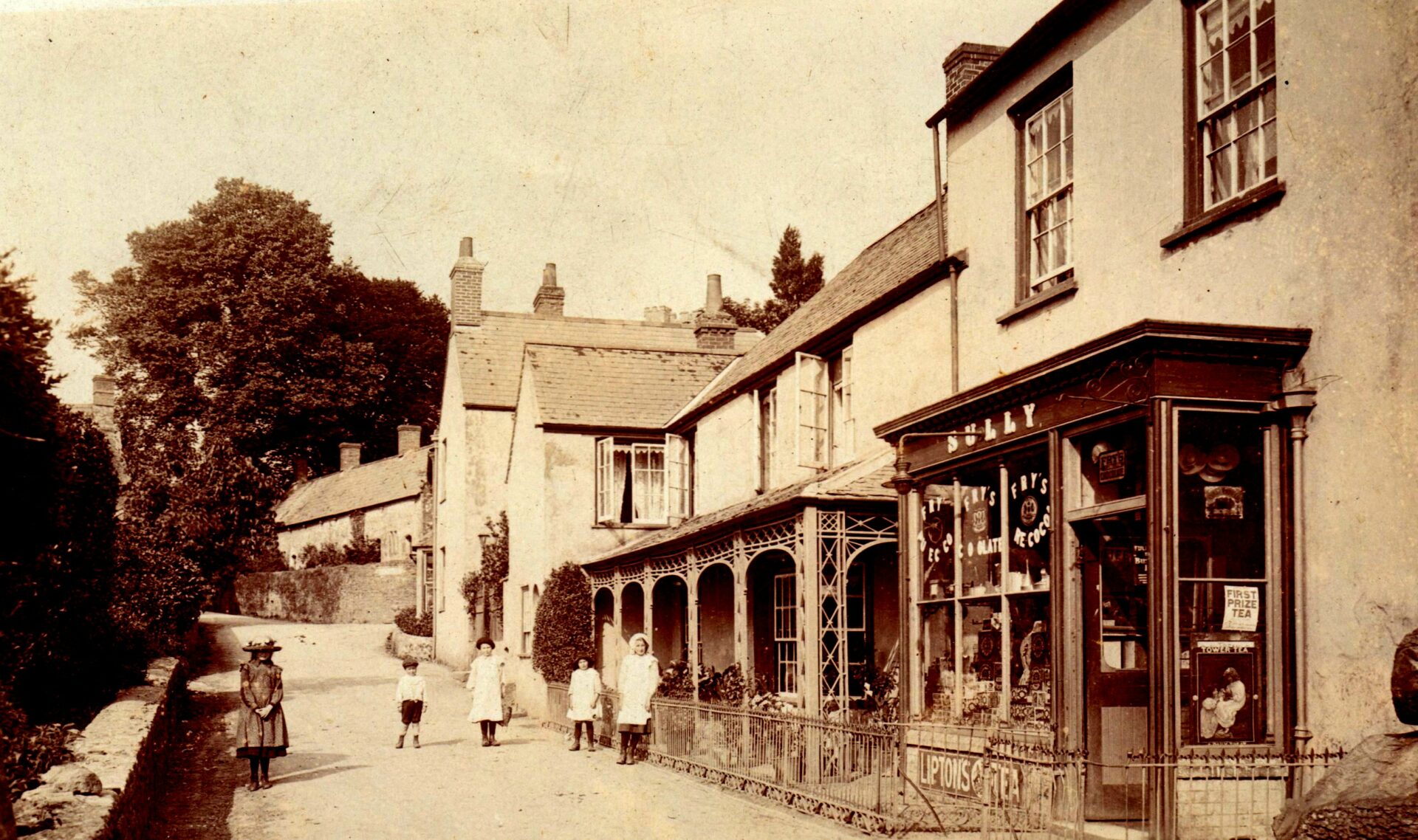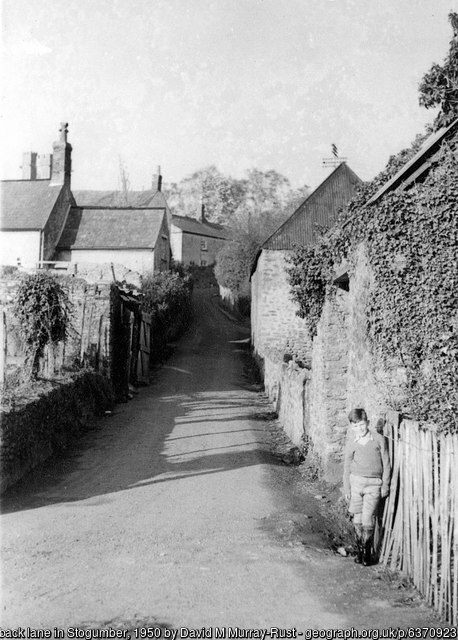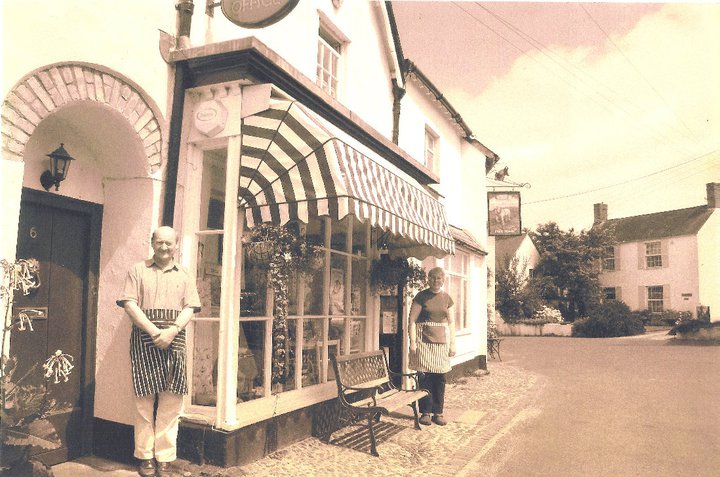Burnett Family at No 6 1800s & 2024
A memorial stone for George and his wife Eliza Burnett – shopkeeper and minister is still in evidence and situated in the vestibule of the Chapel (now an air B & B).
In 1854 George advertised for an apprentice “Wanted immediately, in a dissenting family, a respectable and well-educated youth who desires knowledge of the drapery, grocery and ironmongery branches. A comfortable home will be found. The premium moderate.”As was usual at the time, the lucky lad’s parents had to pay Mr Burnett for his training.
The growth of local newspapers (the West Somerset Free Press was first published in 1860) gave George Burnett scope for more advertising. The shop was often described as including one or more warehouses.
In 1860 George offered the “Family Mourning Warehouse” where “funerals receive prompt and careful attention, are conducted with scrupulous regard to the directions given and on economical principles . The shop, as yet, had no name and was usually referred to as “General Warehouse, opposite the church”. George described himself as “linen draper, grocer, druggist and ironmonger”. When George retired, he passed the business to his sons, first Egerton and then George Thorne Burnett. The stock listed in the advertisements was huge, but by 1870, George jnr. had decided to downsize and discontinue delivering goods with his horses and wagons.
In 1879 George snr. died and George jnr. took over the lease. The property ran from the present shop down the hill to – or possibly included what is now no. 8 (previously known as the Ram”) and apparently included the Malthouse then used as a warehouse, five single cottages and one double cottage.
Gin and champagne were now for sale in the shop, as were Hawk’s horse and cattle oils. By 1887 George Thorne Burnett was not doing quite so well and ceased trading. (An entrepeneur of his time who maybe oversretched his business empire a little too far!)
Some of George’s descendents now live in Victoria, on Vancouver Island, British Columbia, Canada. In Canada Debbie and Mark McKnight searched out the census records of Mark’s ancestors. They discovered the family were living at No 6 High Street Stogumber. Their search revealed that he was a minister at the chapel as well as the shopkeeper. Debbie and Mark visited the UK in 2006 and came to Stogumber to see if their ancestors home was still there and if the Chapel was still operational. They were pleased to find the shop and visited and searched out the Chapel which was then an art centre and is now available as a holiday home. They were delighted to find when they visited in 2006 that the memorial stone for Mark’s Great Great Grandfather George Burnett, is still located in the vestibule of the Chapel.
In 2024, Deb McKnight the wife of George Burnett’s great great grandson spotted via social media, that Stogumber village was raising funds to save the shop and to relocate and purhase for the community and for posterity, the property next door.
Debbie felt that she could not see the shop close after such a long association with the history and business connected to her husband’s family. Debbie therefore, in memory of her busband contributed towards the share option for which the community are very grateful.
